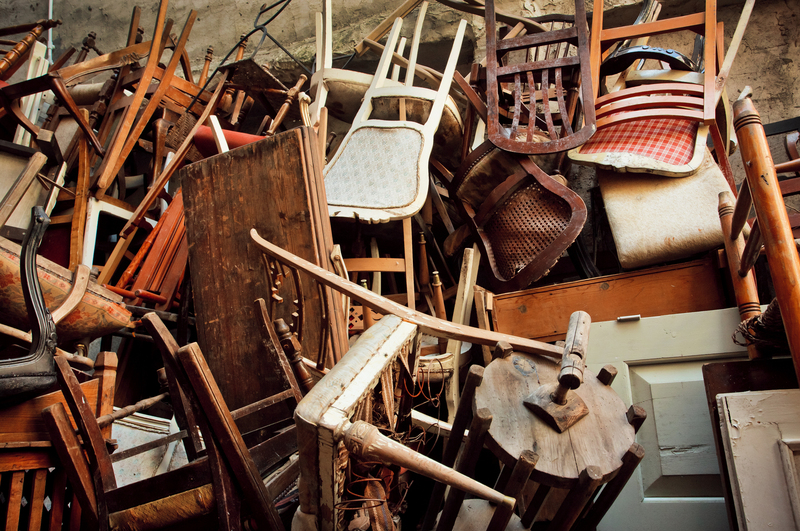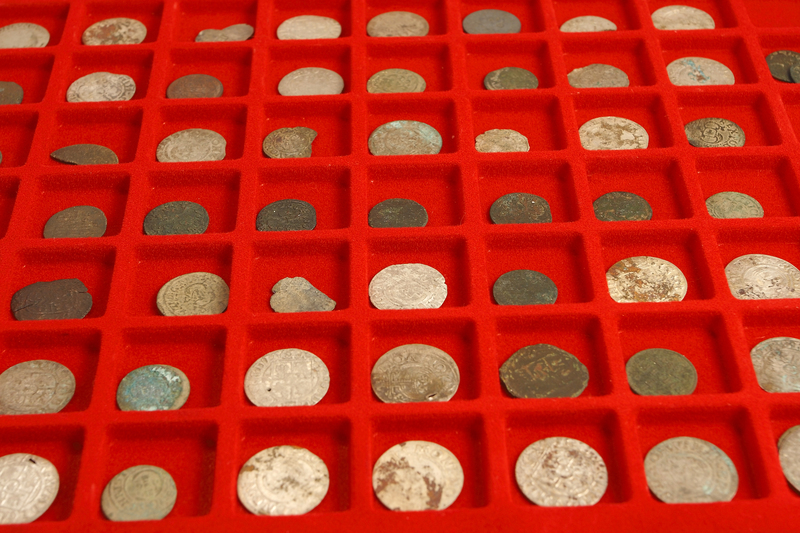Weighing the Risks and Rewards of DIY Piano Moving
Posted on 14/06/2025
Weighing the Risks and Rewards of DIY Piano Moving
Introduction
Moving a piano is no ordinary task. Whether you're a music enthusiast, a passionate pianist, or simply a proud piano owner, someday you may face the significant challenge of relocating your prized instrument. DIY piano moving can be tempting, particularly for those looking to save money or take full control of the process. However, it's essential to thoughtfully weigh the risks and rewards of do-it-yourself piano moving before embarking on such a project.
This comprehensive guide aims to provide clear, informative, and well-structured insights into the complexities of moving a piano yourself. We'll examine every aspect, from advantages and potential pitfalls to safety tips and recommendations, empowering you to make the best decision for your instrument, your home, and yourself.

Understanding the Challenge: What Makes Pianos Hard to Move?
Pianos are not just heavy; they are delicate, intricate, and often of immense sentimental and monetary value. Understanding the structure and characteristics of these instruments helps shed light on why DIY piano moving is a daunting task.
- Weight: Upright pianos typically weigh between 300 and 500 pounds, while grand pianos can exceed 1,000 pounds.
- Size and Shape: Pianos are bulky and awkwardly shaped, making them difficult to maneuver through doorways and up or down stairs.
- Delicacy: Internal components like strings, hammers, and the soundboard are highly sensitive to jarring movements.
- Value: Both monetary and emotional value can be significant, making the risk of damage more concerning.
In light of these challenges, anyone considering self-moving for their piano should make an informed decision, fully understanding both the potential rewards and the pronounced risks.
Potential Rewards of Moving a Piano Yourself
While the risks are considerable, many decide to attempt self-moving a piano due to some very real potential benefits. Carefully executed, a DIY piano move can offer the following rewards:
1. Cost Savings
The most common motivation for do-it-yourself piano moving is to save money. Professional piano movers can be costly, with prices ranging from $150 to $1,000 or more, especially for complex moves.
2. Flexibility and Schedule Control
Handling the move yourself means you can set your own timetable. You don't need to coordinate with a moving company's schedule, giving you the flexibility to work at your own pace or take breaks as you need them.
3. Personal Satisfaction and Involvement
Taking charge of transporting your piano can deliver a strong sense of accomplishment. For many, the process itself is rewarding, fostering teamwork (if others are helping) and deepening your connection to your instrument.
4. Attention to Detail
By personally overseeing the move, you may believe you can ensure the greatest care is taken at every step. Owners often feel more in control when they can supervise or handle their own treasured instrument.
Risks Associated with DIY Piano Moving
On the flipside, moving a piano yourself brings significant risks. Many successful, incident-free DIY moves have occurred, but so have numerous horror stories of damage and injury. Here's why self-moving a piano can be so hazardous:
1. Risk of Injury
Pianos are extremely heavy. An improper lifting technique or an accidental slip can easily cause:
- Back injuries
- Crushed fingers or toes
- Strains and sprains
- Severe bruising
- Long-term joint or muscle problems
Without the right equipment and expertise, the likelihood of harm to you or those assisting is considerable.
2. Risk of Property Damage
Pianos can easily scratch floors, gouge walls, or bang into furniture. Extra heavy or out-of-control instruments can do even greater damage to stairs, banisters, door frames, or tiles in your home or apartment building.
3. Risk of Piano Damage
Perhaps the greatest fear is of damaging the piano itself. Common forms of damage during a failed DIY piano move include:
- Broken legs or pedals
- Damaged exterior wood finish
- Disrupted or damaged internal action components
- Cracked soundboards or frames
- Strings breaking or becoming unseated
A single careless moment can ruin the instrument--sometimes beyond repair.
4. Inadequate Tools or Equipment
Professional piano movers use specialized equipment, such as:
- Heavy-duty piano dollies
- Straps and lifting harnesses
- Ramps and skid boards
- Protective blankets and padding
Most homeowners don't have these tools readily available, increasing the difficulty and risk if attempting to move a piano without them.
5. Absence of Insurance Coverage
If you move the piano yourself and it sustains damage, homeowners' insurance rarely covers accidental breakage during self-moves. In contrast, reputable piano movers carry comprehensive insurance in the event of damage or loss.
Key Considerations Before Attempting a DIY Piano Move
If you're still considering moving a piano without professional help, there are several crucial factors to evaluate before taking action:
- Type of Piano: Uprights are generally easier (but still very difficult) to move than grands. Grand pianos are not recommended for DIY moves unless you have significant experience.
- Location Obstacles: Multiple flights of stairs, narrow hallways, tight corners, or uneven ground? Each of these multiplies the challenge and risk.
- Number of Helpers: You will need a minimum of three strong, able-bodied helpers--ideally more, depending on the size of the instrument and complexity of the route.
- Equipment Access: Can you rent or borrow heavy-duty dollies, straps, ramps, and sufficient padding?
- Sufficient Transport: Is your vehicle large and sturdy enough to accommodate a piano? Do you have a safe way to secure the instrument in transit?
- Physical Strength and Health: Are you (and your helpers) physically able to handle such a demanding task?
Essential Steps for a Safe DIY Piano Move
If after weighing the risks and rewards, you are determined to proceed with a do-it-yourself piano move, follow these critical steps for the best chance at success:
1. Gather Necessary Equipment
- Piano dolly or skid board rated for the weight of your instrument
- Heavy-duty moving straps/harnesses
- Moving blankets or thick quilted pads
- Protective gloves
- Plastic wrap or padding for pedals and keys
- Ramp (for stairs or truck entry, if needed)
- Measuring tape to confirm tight fits along your route
2. Prepare the Piano and the Moving Pathway
- Lock the keyboard cover and secure all moving parts.
- Wrap the piano in moving blankets to prevent scratches and dents.
- Clear a continuous, unobstructed path from start to finish.
- Ensure there are no rugs, debris, or objects that could cause tripping or sliding.
- Secure pets and children away from the moving area.
3. Lift and Move Safely
- Always bend at the knees, not the waist, and use your legs to lift.
- Keep the piano upright at all times (especially critical for upright models).
- Move slowly and deliberately, maintaining communication with your helpers.
- Never attempt to move a grand piano without disassembling the legs and pedals first.
- Utilize ramps instead of lifting whenever possible.
4. Transport Carefully
- Secure the piano in the moving truck to prevent shifting.
- Avoid placing heavy objects on the piano or stacking it in such a way that it could fall over.
- Drive slowly, avoiding sharp turns, sudden stops, and bumpy roads.
5. Reassembly and Tuning
- Upon arrival, move the piano just as cautiously into its new location.
- Reassemble any removed components with care.
- After settling, arrange for a piano technician to tune and inspect the instrument, as moves often cause detuning.
When to Leave It to the Professionals
Despite the potential rewards, many experts recommend hiring professional piano movers for all but the simplest and safest moves. Certain situations always warrant professional expertise:
- Large grand pianos of any type
- Navigating multiple flights of stairs or tight turns
- Moving through high-traffic or public areas (such as apartments or venues)
- Risks of damaging antique or rare pianos
- Lack of able-bodied helpers or proper equipment
Professional piano movers are trained specifically in safe handling, transport, and technical assembly/disassembly. Most importantly, they are insured for all transport-related risks.

Frequently Asked Questions About DIY Piano Moving
Can I Move a Piano By Myself?
No, you should never attempt to move a piano alone. The weight and complexity require at least three or four strong helpers.
Can Moving a Piano Damage It?
Yes! Moving a piano improperly can damage both mechanical parts and cosmetic finishes--sometimes with long-term impacts on sound and playability.
Do I Need to Tune My Piano After Moving?
Absolutely. Pianos almost always require tuning after a move, as the shaking and climate changes disrupt the delicate tension of the strings and frame.
Is DIY Piano Moving Ever a Good Idea?
With robust preparation, the right equipment, and a straightforward environment, moving a small upright piano yourself can work. For grand pianos, stairs, or difficult conditions, always hire professionals.
Conclusion: Carefully Evaluate DIY Piano Moving
Weighing the risks and rewards of moving a piano yourself is not a decision to take lightly. The promise of savings and self-reliance must be balanced against very real hazards--to your health, your home, and your beloved instrument.
Before undertaking a DIY piano move, assess the complexity of your particular situation. Even then, ensure you equip yourself with the right help, tools, and techniques. For more valuable or challenging moves, investing in professional piano movers is often the wisest and most cost-effective choice--protecting both your piano and your peace of mind.
If you do decide to try moving a piano yourself, always prioritize safety, preparation, and the protection of your instrument above all else.
Remember: When it comes to DIY piano moving, careful planning and honest self-assessment will serve you far better than taking unnecessary risks.









